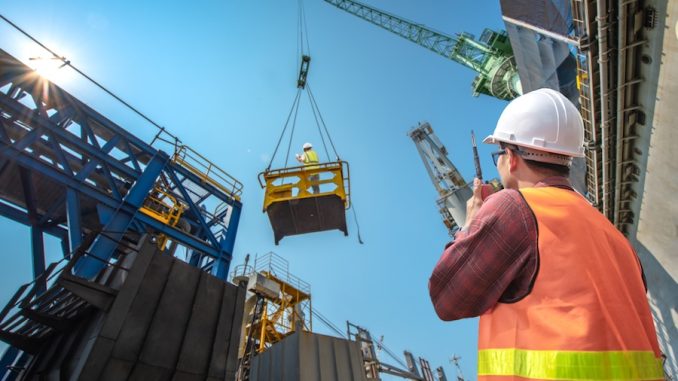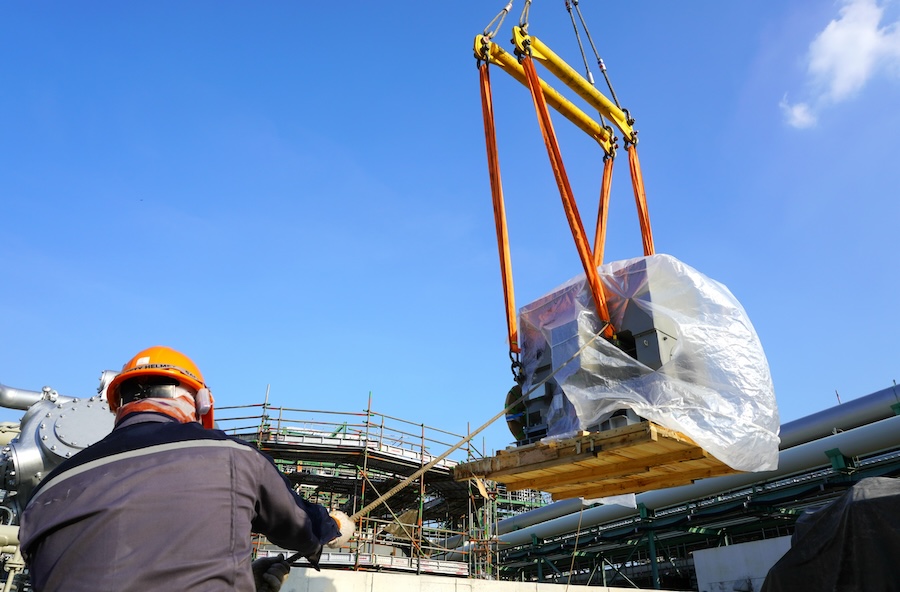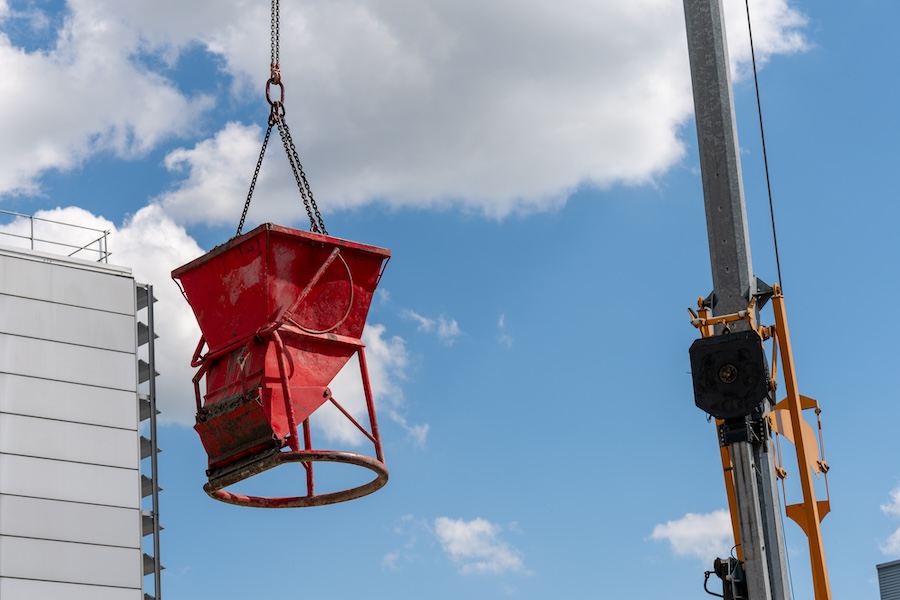
View the complete article here.
Crane accessories are indispensable tools that enhance the versatility and safety of crane operations across various industries. From lifting heavy loads with precision to ensuring safe personnel lifts, the right accessories not only increase efficiency but also ensure compliance with stringent safety standards. This guide covers the types of crane accessories available, offers guidance on selection and purchasing, and underscores the importance of regular maintenance and compliance.
Types of Crane Accessories
Crane accessories are typically categorized into three main groups…
Lifting and Rigging Accessories
Hooks are critical components in crane operations, used to attach loads securely. They come in various shapes such as C-hooks, swivel hooks, and sorting hooks—each designed for specific tasks and load types.
Slings are flexible straps used to lift heavy loads. They are made from different materials, including:
- Wire rope slings are durable and suitable for harsh conditions.
- Chain slings are adjustable and ideal for uneven loads.
- Synthetic slings are lightweight and used in delicate operations where surface damage is a concern.
Lifting beams and spreader bars help distribute the weight of the load more evenly across the crane hook, improving balance and control during lifts. They are essential in complex lifting scenarios where load control and stability are paramount.
Specialty Carrying Solutions
Specifically designed for concrete pouring, concrete buckets ensure precise and controlled delivery of concrete to the intended site—reducing spillage and improving efficiency.
Propane bottle carriers are designed to handle and transport propane or other gas cylinders safely. They secure the cylinders during transit, preventing accidents related to gas leakage or cylinder damage.
By attaching pallet forks, cranes can be temporarily transformed into forklifts—allowing for the handling of palletized goods. This versatility is especially useful in sites where space or equipment versatility is a concern.
Worksite Efficiency Tools
Self-dumping bins and bins with fork pockets are designed for efficiency in material handling and waste disposal. Self-dumping bins facilitate easy disposal of debris, while models with fork pockets can be easily moved and managed with forklifts—enhancing worksite productivity.
Needless to say, safety is paramount when lifting personnel. Crane man baskets are designed to safely lift workers to heights, providing a secure platform that meets safety standards. They are equipped with harness points and emergency features to protect workers in elevated environments.

Selection and Purchasing Tips
Choosing the right crane accessories is crucial for operational efficiency and safety.
Understanding Your Needs
Start by understanding the type and maximum lifting capacity of your crane. This ensures that the accessories you choose are compatible and can safely handle the loads.
Consider the specifics of the projects you undertake. Different materials, weights, and environments may necessitate specific types of accessories—such as synthetic slings for corrosive environments or heavy-duty hooks for larger loads.
Adhering to Standards and Ensuring Quality
Ensure that the accessories you choose comply with relevant industry standards—such as those set by OSHA, ANSI, or ISO. This not only ensures compliance with regulations but also guarantees safety and efficiency.
Opt for high-quality products from reputable manufacturers. Higher quality often translates to greater durability and safety. Check for warranties and after-sales support, which are indicators of a manufacturer’s confidence in their product.
Evaluating Suppliers and Products
Choose suppliers known for reliability and good customer service. Supplier reputation can be a good indicator of the overall quality of the accessories they provide.
Look at reviews and feedback from other users. Real-world usage information can provide insights into the performance and reliability of the accessories.
Upgrading and Replacement
Keep up with technological advancements in crane accessories. Upgrading to newer, more efficient, and safer models can be a wise investment.
Recognize the life expectancy of each accessory and plan for its replacement proactively. Regular evaluations can help in budgeting for replacements before failures occur, ensuring continuous safety and efficiency.
Safety and Compliance
Ensuring the safety and compliance of crane operations is not just a regulatory requirement but a fundamental necessity to protect workers and equipment. Crane accessories, though diverse in function, all require adherence to stringent safety standards and routine maintenance to operate safely.
Safety Standards and Certifications
Crane accessories must comply with various national and international safety standards to ensure they can handle the designated loads and operate under specific conditions safely. Key standards include:
- OSHA (Occupational Safety and Health Administration) regulations: OSHA provides guidelines on the proper use and maintenance of crane accessories, including specific requirements for load testing and operational protocols.
- ANSI (American National Standards Institute) standards: ANSI standards cover specifications for the design, testing, and use of crane accessories to ensure they meet safety and performance criteria.
- ISO (International Organization for Standardization) certifications: Particularly for companies operating internationally, ISO certifications affirm that crane accessories meet international safety and quality standards.
Importance of Regular Inspections and Maintenance
Regular inspections and maintenance are critical to prolonging the life and ensuring the safety of crane accessories. Routine checks include:
- Visual inspections: Before each use—a visual check can identify any obvious defects like cracks, wear, and deformation. This is crucial for items such as hooks and slings, where even minor damage can significantly impact safety.
- Periodic load testing: Load testing of accessories like lifting beams and spreader bars ensures they can handle specified weights under actual operating conditions.
- Maintenance procedures: Regular lubrication, adjustment, and replacement of worn-out parts are necessary to keep crane accessories functioning correctly. Special attention should be given to accessories like cable reels and rotators, which have moving parts susceptible to wear.
Documentation and Compliance Tracking
Maintaining detailed records of inspections, maintenance, and compliance with safety standards is essential for legal and safety reasons. These records should include the date, findings, actions taken, and the inspector’s signature. They provide an audit trail that can be crucial during insurance claims or regulatory checks.

Final Thoughts
The selection and maintenance of crane accessories are critical for ensuring not only the efficiency and safety of operations but also compliance with rigorous industry standards. By carefully choosing the right accessories based on specific project needs and maintaining them meticulously, operators can extend the lifespan of their equipment and safeguard the work environment. Remember, the key to maximizing productivity and safety lies in informed purchasing decisions and proactive maintenance practices.
View the complete article here.
What types of crane accessories are available for enhancing lifting operations?
Crane accessories include lifting and rigging accessories, specialty carrying solutions, and worksite efficiency tools like hooks, slings, lifting beams, concrete buckets, and crane man baskets.
How do I ensure the crane accessories I purchase are safe and compliant?
Ensure crane accessories comply with OSHA, ANSI, or ISO standards, and opt for high-quality products from reputable manufacturers with good reviews and support.













































